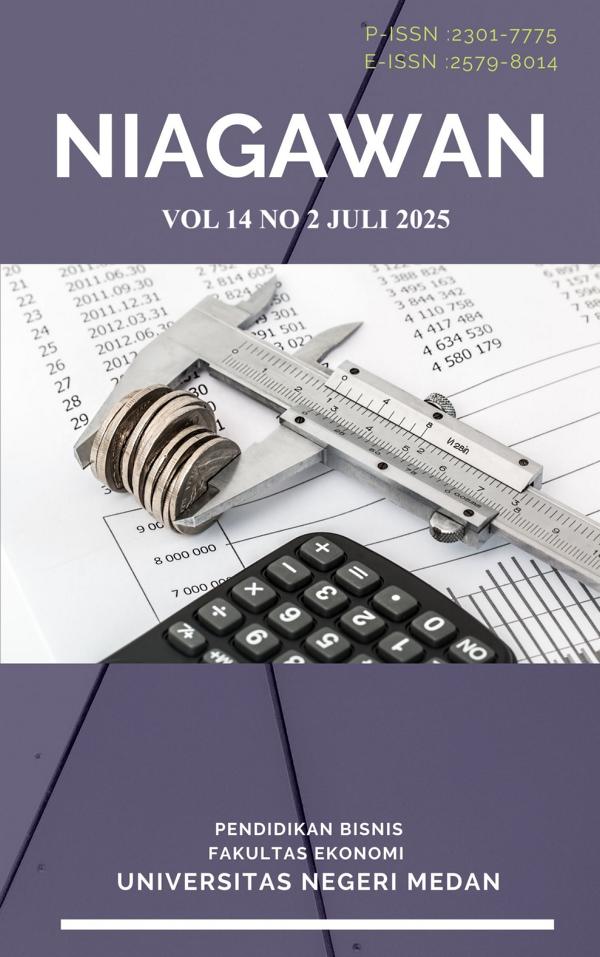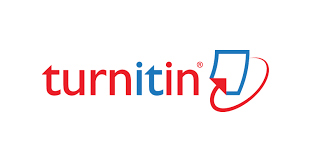SINERGI KERJATIM: SUATU PERSPECTIVE DALAM MODAL SUMBER DAYA MANUSIA
DOI:
https://doi.org/10.24114/niaga.v14i2.66405Keywords:
Berbagi Pengetahuan, Inovasi dan Sinergi KerjatimAbstract
Hubungan antara sumber daya manusia dan inovasi memiliki hubungan yang tidak terpisahkan di dunia bisnis dan menjadi kebutuhan untuk bisnis dapat bertahan dan bersaing di tengah tuntutan konsumen yang selalu meningkat dari waktu ke waktu. Perusahaan saat ini semakin mengadopsi model inovasi terbuka dan terlibat dengan sumber pengetahuan eksternal dan harus menemukan manusia yang berkuliatas untuk membawa inovasi ke dalam Perusahaan. Pengetahuan dan inovasi baru merupakan kebutuhan untuk menjadikan Perusahaan compete di tengah persaingan yang semakin ketat. Berinovasi cenderung sangat bergantung pada pengetahuan, keterampilan, dan pengalaman karyawan dalam proses penciptaan nilai. Hal penting lain dalam inovasi adalah adanya proses transfer knowledge dan kesediaan berbagi ilmu pengetahuan. Untuk lebih jauh memahami berbagi pengetahuan dan inovasi dibutuhkan pelatihan khusus, indikator kinerja baru, imbalan baru, dan cara-cara baru untuk berkomunikasi dengan/dan di antara karyawan. Hal tersebut merupakan tuntutan untuk menjadikan sumber daya manusia lebih aktif, efektif dan efisien. Oleh karena itu, berbagi pengetahuan diperlukan untuk mengakomodasi peran strategis sumber daya manusia untuk kreatif dan inovatif serta kompetitif untuk menjadikan Perusahaan yang profitable dan sustanaible. Sinergi kerjatim ini merupakan pengembangan dari teori-teori sumberdaya manusia. Human Capital atau Sumber Daya Manusia merupakan kombinasi dari pengetahuan, keterampilan, inovasi dan kemampuan seseorang untuk menjalankan tugasnya sehingga dapat menciptkan suatu nilai tambah dan akan memberikan suistanable revenue di masa yang akan datang.References
Aboobaker, Nimitha and Zakkariya K.A., “Influence of digital learning orientation and readiness for change on innovative work behaviour: reflections from the higher education sector”, Development And Learning In Organizations: An International Journal, DOI 10.1108/DLO-08-2019-0191 VOL. 34 NO. 2 2020.
Alisher Tohirovich, D., Changjoon, R., & Junghyun, Y. (2017). Organizational structure and innovation performance: Is employee innovative behavior a missing link? Career Development International, 22(4), 334-350. Retrieved from https://doi.org/10.1108/CDI-12-2016-0234. doi:10.1108/CDI-12-2016-0234.
Amari, I.N., Dewayani, J.,&Ferdinand, A. T. (2019). Strategic Human Resources Roles and Knowledge Sharinh: How do Enhancing Organizational Innovation? Quality Access to Succes, 20(168), 8.
Ardiansyah, (2011). Manajemen Sumber Daya Manusia. Edisi kesepuluh Indeks,
Armenakis, A A., harris, S., & Mossholder, K. W. (1993). Creating readiness for organizational change. Human Relations, 46(6).
As’ad, Moh., (2000). Seri Ilmu Manajemen Sumber Daya Manusia: Psikologi Industri. Edisi Keempat. Yogyakarta: Liberty.
Aulawi, Govindaraju, Suryadi, &Sudirman. Hubungan Knowledge Sharing Behavior Dan Individual Innovation Capability. Bandung : Institute Teknologi Bandung. 2009
Bernadin, H. John and Joyce. A. Russell., (1993). Human ResourceManagement : An Experiential Approach, Mc.Graw Hill, Boston.
Bock, G.-W., Zmud, R. W., Kim, Y.-G., & Lee, J.-N. (2005). Behavioral Intention
Cabrilo, S., Nesic, L. G., & Mitrovic, S. (2014). Study on human capital gaps for effective innovation strategies in the knowledge era. Journal of Intellectual Capital, 15(3), 411-429. Retrieved from http://www.emeraldinsight.com/doi/abs/10.1108/JIC-05-2014-0058. doi:doi10.1108/JIC-05-2014-0058
Cheng-Wen Lee and Nurul Hidayat, The Influence of Knowledge Sharing and Absorptive Capacity on Service Innovation Performance of Islamic Banking in North Borneo Indonesia. Advances in Management & Applied Economics, vol. 8, no. 4, 2018, 17-28 ISSN: 1792-7544 (print version), 1792-7552 (online) Scienpress Ltd, 201
Damayanti, (2005). Manajemen Sumber Daya Manusia, Salemba Empat, Jakarta
Eisenhardt, K.M. and Tabrizi, D.B.N. (1995), “Accelerating adaptive processes : product innovation in the global computer industry”, Administrative Science Quarterly, Vol. 40 No. 1, pp. 84-110.
Ferdinand, Augusty, (2014). Metode Penelitian Manajemen, Pedoman Penelitian Skripsi, Tesis, dan Desertas Ilmu Manajemen, Edisi kelima BP-UNDIP, Semarang.
Formation in Knowledge Sharing: Examining the Roles of Extrinsic Motivators, Social-Psychological Forces, and Organizational Climate. MIS Quarterly, 29(1), 87-111
Gomes, Faustino Cardoso., (2002). Manajemen Sumber Daya Manusia, Andi Offset, Yogyakarta.
Hecklau F, Galeitzke M, Flachs S, Kohl H (2016). Holistic Approach for Human Resource Management in Industry 4.0. Published by Elsevier B.V. This is an open access article under the CC BY- NC-ND license (http://creativecommons.org/licenses/ by-nc-nd/4.0/)
Heffner, M. and Sharif, d.N. (2008), “Knowledge fusion for technological innovation in organizations”, Journal of Knowledge Management, Vol. 12 No. 2, pp. 79-93.
Hu, L. and Randel, A.E. (2014), “Knowledge sharing in teams: social capital, extrinsic incentives, and team innovation”, Group & Organization Management, Vol. 39 No. 2, pp. 1-31
Ivancevich, John M., (2008). Human Resources Management. Edisi 10 Mc.Graw- Hill International. Inc. Singapura
Jakarta
Jasińska Monika, “Synergy - An Enhancement Of Learning Organisations Undergoing A Change” Siedlce University of Natural Sciences and Humanities, Faculty of Social Sciences, Konarskiego Street 2; 08-110 Siedlce, Poland
Mathis, R.L dan J.H Jackson. (2001). Manajemen Sumber Daya Manusia (Human Resource Manajemen). Edisi pertama. Jakarta: PT Salemba Empat
Mathis, R.L dan J.H Jackson. (2002). Manajemen Sumber Daya Manusia (Human Resource Manajemen). Edisi pertama. Jakarta: PT Salemba Empat
Mathis, R.L dan J.H Jackson., (2011). Human Resource Manajemen. Thirteen Edition, South Western Cengege Learning, 5191 Natorp Boulevard, Mason, OH 45040, USA.
McCormick, Earnest J. and Tiffin, 2002. Human Resource Management, Prentice- Hall, Singapore.
Milkovich, Geroge, T & Boudreau, John, W., (1996). Human Resource Management, Irwin Homewood, Boston.
Nasution, Harmaein, 2005. Proses Pengelolaan Sumber Daya Manusia, USU Press, Medan.
Nitisemito, A.S., (2002). Manajemen Personalia (Manajemen Sumber Daya Manusia), Galia Indonesia, Jakarta
Pandey, A., Gupta, V., & Gupta, R. K. (2019). Spirituality and innovative behaviour in teams: Examining the mediating role of team learning. IIMB Management Review, 31(2), 116-126. doi:10.1016/j.iimb.2019.03.013
Preacher, K. J., & Hayes, A. F. (2008a). Asymptotic and resampling strategiesfor assessing and comparing indirect effects in multiple mediator models. Behavior Research Methods, 40,879 891.
Rivai, Veithzal dan E.J. Sagala., (2011). Manajemen Sumber Daya Manusia untuk Perusahaan: dari Teori Ke Praktik, Edisi Pertama, Raja Grafindo Persada, Jakarta.
Salas, E. and Iwig, C. (2016), “Can teamwork enhance safety?”, Offshore Technology Conference, Houston, TX, doi: 10.4043/26986-MS
Santos-Vijande, M. L., & Alvarez- González L. I. (2007). Innovativeness and organizational innovation in total quality oriented firms: The moderating role of market turbulance. Technovation, 27(9), 514-532.doi:10.1016/j.technovation.2007.05.014
Somech, A. (2006), “The effects of leadership style and team process on performance and innovation infunctionally heterogeneous teams”, Journal of Management, Vol. 32 No. 1, pp. 132-157
Srivastava, A., Bartol, K. M., & Locke, E. A. (2006). Empowering Leadership in Management Teams Effects on Knowledge Sharing, Efficacy, And Performance. Academy of Management Journal, 49 (6), 1239-1251
Tang, C. and Naumann, S.E. (2016), “Team diversity, mood, and team creativity: the role of team knowledge sharing in chinese R&D teams”, Journal of Management and Organization, Vol. 22 No. 3, pp. 420-434
Wulandari, F., Ferdinand, A. T., & Dwiatmadja, C. (2018). Knowledge Sharing in a Critical Moment of Work. International Journal of Knowledge Management, 14(2), 88-98. doi:10.4018/ijkm.2018040
Downloads
Published
Issue
Section
License
Copyright (c) 2025 Muhammad Ras Muis, Jupianus Sitepu, Muammar Rinaldi

This work is licensed under a Creative Commons Attribution-NonCommercial-ShareAlike 4.0 International License.
Authors who publish in this journal agree to the following terms:
- Authors retain copyright and grant the journal the right of first publication, with the work simultaneously licensed under a Creative Commons Attribution License that allows others to share and adapt the work with an acknowledgment of the work's authorship and initial publication in this journal.
- Authors can enter into separate, additional contractual arrangements for the non-exclusive distribution of the journal's published version of the work, with an acknowledgment of its initial publication in this journal.
- Authors are permitted and encouraged to post their work online before and during the submission process, as it can lead to productive exchanges and earlier and greater citation of published work. Where authors include such work in an institutional repository or on their website, we request that they include a statement acknowledging the Jurnal Perspektif Pembiayaan dan Pembangunan Daerah, including the name of the journal, the volume number, and a web link to the journal item.
- Authors should be aware that the Creative Commons Attribution 4.0 International License (CC BY 4.0) permits readers to share (copy and redistribute the work in any medium or format) and adapt (remix, transform, and build upon the work) for any purpose, even commercially, provided they also give appropriate credit to the work, provide a link to the license, and indicate if changes were made. They may do these things reasonably but not in any way that suggests the author or the publisher endorses their use.
NIAGAWAN by Program Studi Pendidikan Bisnis Fakultas Ekonomi Universitas Negeri Medan is licensed under CC BY-NC 4.0





